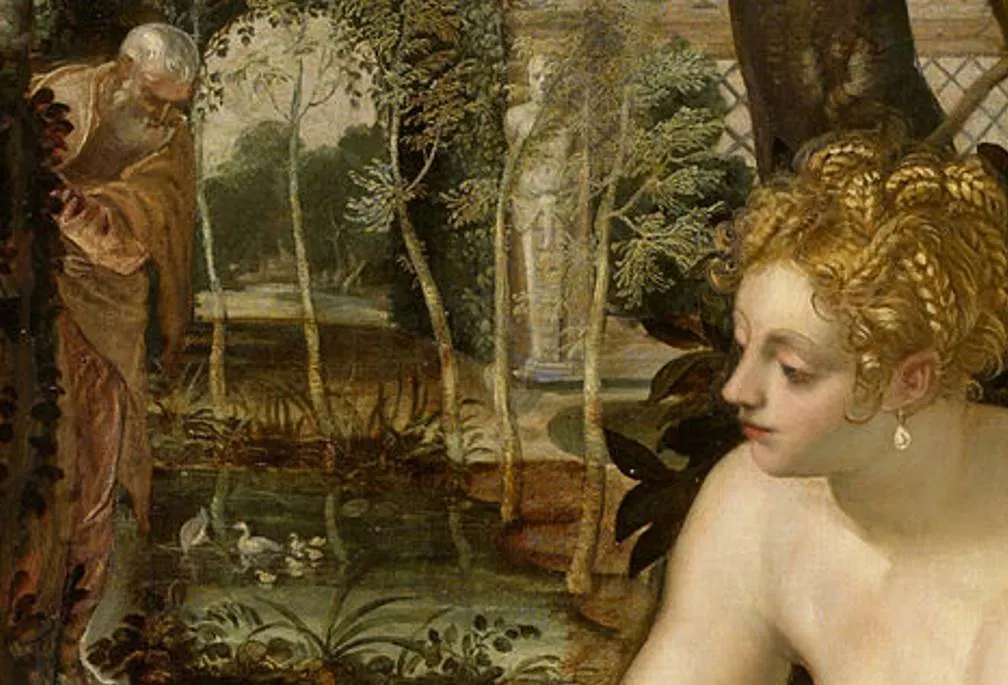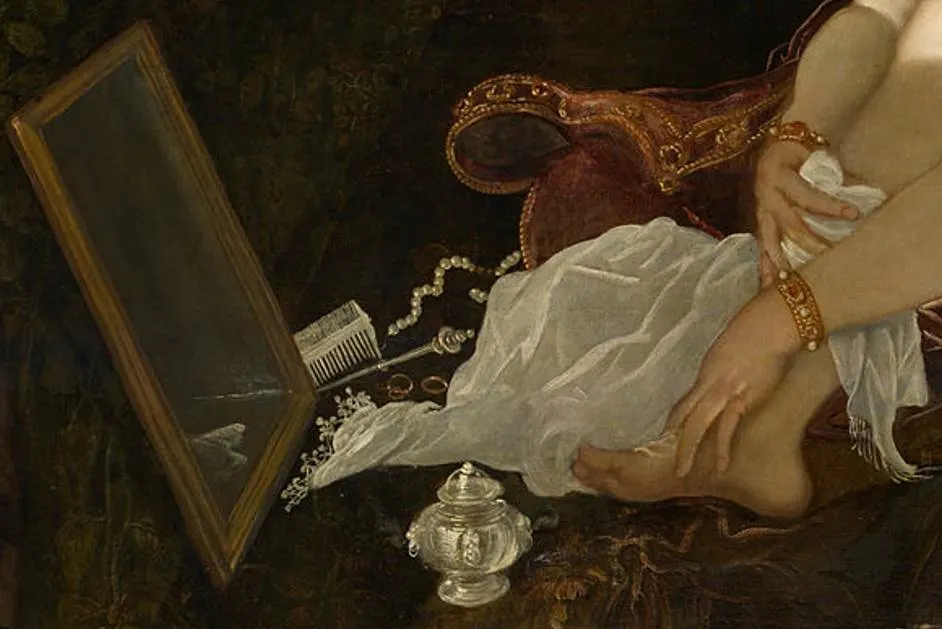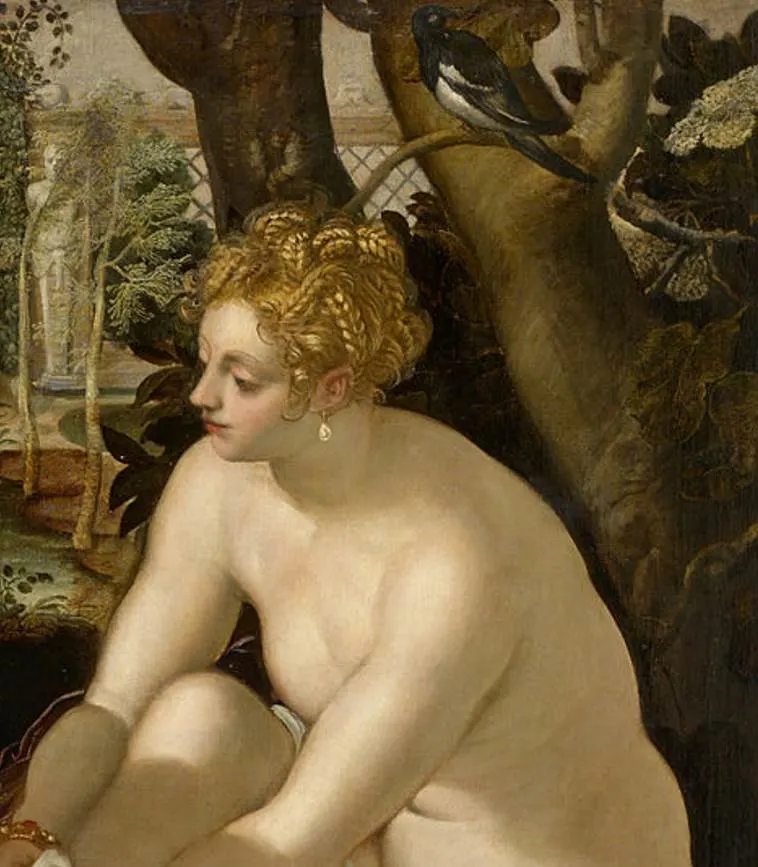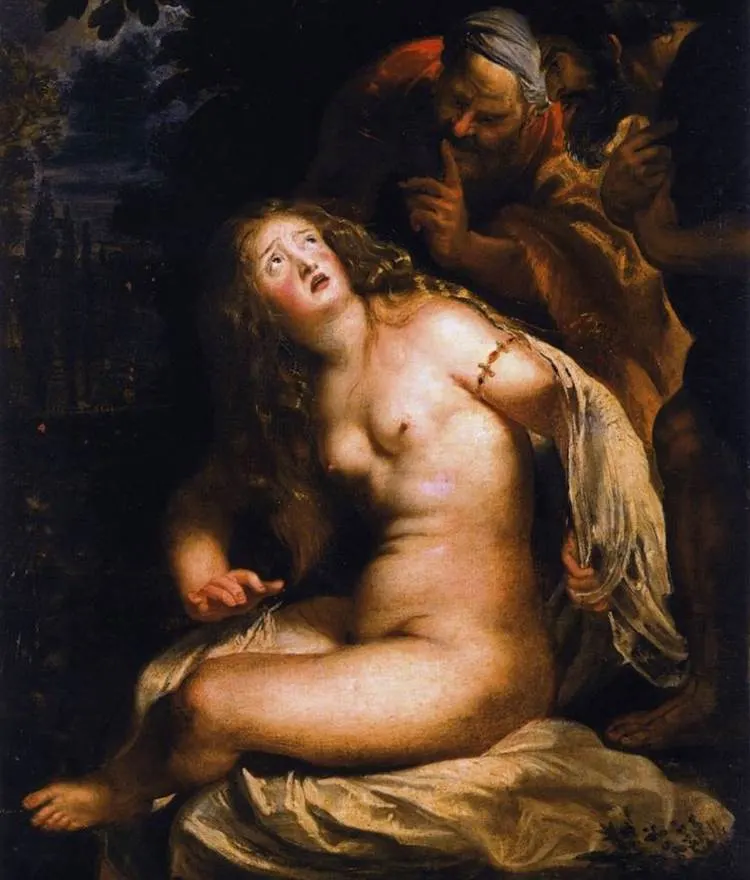The 16th century was the most prolific in history for Venice, a city built on 118 small islands in northeastern Italy. 3 of the greatest artists of the Renaissance and Mannerism (Late Renaissance) eras who lived and worked here and who produced numerous works that still decorate churches and palaces in the city today.
One of these painters was named Jacopo Robusti (1518-1594), a man referred to as “Tintoretto,” his childhood nickname, or “Il Furioso,” a reference to the incredible pace in which he produced his paintings.
In this article, we’ll take a closer look at some of the most interesting facts about Susanna and the Elders by Tintoretto, one of the Venetian artist’s ultimate masterpieces.
1. It was painted shortly after Tintoretto’s major breakthrough
Tintoretto had a remarkable marketing strategy in the early phase of his career. He often produced monumental works of art free of charge for patrons all across Venice. This paid off as it eventually earned him real commissions to make a more than decent living.
His breakthrough came when the Scuola di San Marco in the city commissioned him a work called “Miracle of the Slave” in 1548.
This painting firmly established himself as one of the leading artists in Venice, regardless of the competition of Titian (1490-1576), an already experienced master, and Paolo Veronese (1528–1588), who arrived in Venice in 1551.
Susanna and the Elders was painted between 1555 and 1556, a period in the career of Tintoretto that things started to look bright for the artist in his thirties.

2. It depicts a popular Biblical story from the Book of Daniel
The story of Susanna and the Elders is told in the Book of Daniel, a work that was written in the 2nd century B.C. and which takes place in the 6th century B.C. It depicts Susanna, the wife of a rich man named Joakim, who takes a bath in a small pool located in an orchard.
She is being spied on by two voyeurs, elderly men who were the guests of her husband and who can be seen lusting for her. When they try to approach her she firmly rejects the two men and they subsequently accuse her of adultery.

The crowd initially believed the two old men and Susanna was sentenced to death by stoning, the punishment for adultery in Ancient Jewish Law.
When a young man named Daniel, the future Prophet Daniel, was told by an angel to stop the execution of a young woman, he cross-interrogated the men separately. Their story didn’t match and they were accused of lying and sentenced to death themselves.

3. The artist included various symbols to describe the story of Susanna
The naked Susanna can be seen sitting at the edge of the small pool and is seemingly unaware of the two old men watching her. She is preoccupied with her image in the mirror and her jewelry and beauty attributes can be seen lying beside her.
The two old men are hiding behind a bush of roses on opposite sides of the trellis. This way, the overall composition of the figures forms a triangle.
Various elements were included to serve as symbols of the Biblical story of Susanna and the Elders, including:
- Roses and the deer on the left-hand side represent desire and lust.
- The magpie above Susanna represents the future accusation of Susanna.
- The ducks represent loyalty.
- The red robe of the elders represents danger while the white of Susanna represents innocence.

4. It’s the most famous of multiple versions produced by Tintoretto
This version of Susanna and the Elders by Tintoretto is one of at least 4 different paintings with the same subject produced by the artist and his studio. While the subject is the same, the details of these paintings differ quite radically:
- Painting at the Louvre – 1550-1560 – Susanna is seen bathing together with her two assistants.
- Painting at the Prado Museum – 1552-1555 – The two men are caught in the act of harassing Susanna.
- Painting at the NGA in Washington D.C. – 1580 – Susanna is seen with 1 assistant and the elders appear in the distant background.

5. Where is the painting located today?
So where is this particular painting, considered to be the ultimate version of Susanna and the Elders by Tintoretto, located?
You can admire this remarkable work of art at the Kunsthistorisches Museum in Vienna, the most famous museum in the capital of Austria.
This museum, which is located in a monumental 19th-century building, has a large number of paintings of Old Masters on display. Some of these include Raphael, Titian, and Peter Paul Rubens, to name just a few.

More interesting facts about Susanna and the Elders by Tintoretto
6. Tintoretto became world-famous for both the speed at which he painted and the monumental scale of his paintings. Many of his paintings are still located in the place they were originally hung for the simple fact that they were too big to be moved.
His work “Il Paradiso” (1594) at the Doge’s Palace in Venice is the main example as it’s considered the largest oil on panel painting ever produced with dimensions of 9.1 x 22.6 meters (29.9 x 74.1 feet).
This means that Susanna and the Elders by Tintoretto is a relatively small work in his oeuvre as it has dimensions of 146 × 194 centimeters (4.95 × 6.42 feet).
7. The items lying beside Susanna were depicted with an amazing level of realism and have been described as being a still-life painting by themselves.
Some of the depicted items include a silk shawl which is wrapped around Susanna’s leg, pearls, jewelry, a comb, and silverware. She is also wearing two bracelets featuring gems.

8. The painting might have a connotation to political events that happened in the mid-16th century as well. The outline of Venice can be seen in the left part of the painting and it has been suggested that Susanna herself represented the city of Venice.
The connection to the political events of the 16th-century is the threat of an invasion of the Ottoman Empire under the command of Suleiman the Magnificent (1494-1566). The two elderly men invading Susanna serves as a metaphor for these events.
9. Another metaphorical meaning behind the painting could be a problem that occurred within the city itself. Prostitutes were blamed for a syphilis epidemic that occurred around this time.
Susanna could represent the innocent prostitute while the elderly men represent the men who visit these prostitutes to spread the epidemic. In that sense, the painting provides a contemporary criticism of society in the Venetian Republic.

10. What’s remarkable about the story of Susanna and the Elders is that the two elderly men were respectable members of society. It takes place around the city of Babylon and the two men were judges there.
The two men were waiting for the assistants of Susanna to go away to attack the young woman who was rich according to the wide variety of utensils and jewelry she owned.
This remarkable Biblical story was widely popular in the world of art and was painted by a large number of artists. One of the most popular versions is in the collection of the Galleria Borghese in Rome and is a painting by Peter Paul Rubens which he produced during his stay in Italy in 1607.

